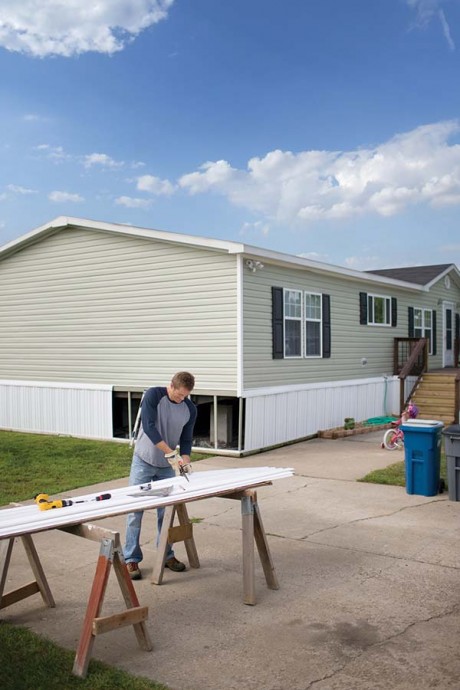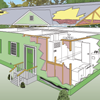Making energy affordable in manufactured homes
By Hannah McKenzie
Q: I live in a mobile home with extremely high utility bills. What can I do to lower my bills?
A: It is overwhelming to have astronomical utility bills for a modest home. Mobile homes — now called manufactured homes — became popular in the 1950s and remain popular today. Nearly 600,000 North Carolina households live in manufactured homes. For decades, federal regulations for manufactured homes have permitted fewer energy-efficient technologies — for insulation and windows to name a few — compared to site-built code-compliant homes. It is stressful to purchase a home and later learn that monthly energy bills are nowhere near affordable.
On the flip side, some manufacturers sell Energy Star-labeled homes that offer substantial savings on energy use. Manufactured homes are available across a wide spectrum, from compact and very affordable to multi-level houses with high-end features.
In a typical manufactured home, heating and cooling accounts for approximately 40 percent of the utility bills. There are two ways to limit this expense:
1. Reduce the amount of heated or cooled air escaping from your home.
This includes sealing HVAC ductwork with bucket mastic — goop with a peanut butter consistency. You also should seal holes that lead to the outside with caulk or foam. In double-wide or larger homes, the seam where the units are joined needs to be sealed, not just insulated. On manufactured homes with low-pitched roofs, weatherization crews have found that filling the tiny attic with dense pack insulation is a good way to limit air and heat loss. Consider replacing windows if they are drafty.
2. Improve the efficiency of your heating and cooling system.
If you are using electric strip heat, installing a ductless heat pump (see page 10) could be a vastly more affordable option. Look at fuel costs to help you decide between a gas furnace or an electric heat pump system.
Water heating chews up about 19 percent of a manufactured home’s energy bill. Taking shorter showers and installing WaterSense-labeled showerheads that use less than two gallons per minute can save up to $10 per year. When replacing the water heater, buy the most efficient one you can afford. Use cold water to wash your clothing when possible. When replacing the clothes washer, choose an Energy Star-labeled clothes washer since they use much less water and electricity.
Another energy drain is the refrigerator. Energystar.gov has a nifty webpage that will calculate the energy cost of your current refrigerator and how much can be saved by purchasing a new one. Alternatively, you can read the yellow Energy Guide that came with your refrigerator to compare its operating costs to other refrigerators.
The final category of home energy use is other appliances and lighting. These adjustments will make a noticeable difference in your bill. Turn off lights, televisions, computers, gaming consoles, fans, stereos and other electronics while they are not actively being used. CFL and LED light bulbs use about a quarter of the electricity compared to traditional incandescent light bulbs, so switch out your bulbs!
-
Share this story:


 Also check out our illustrated guide to upgrading a manufactured home
Also check out our illustrated guide to upgrading a manufactured home